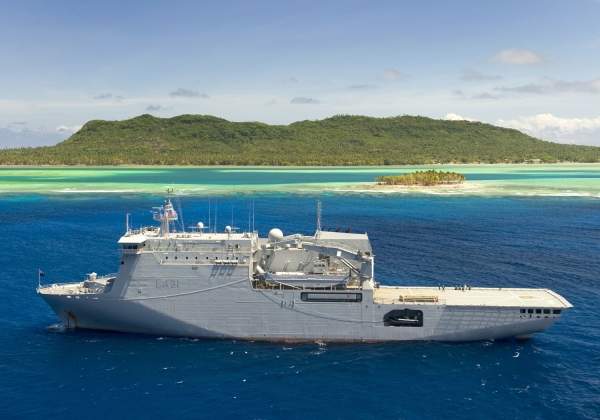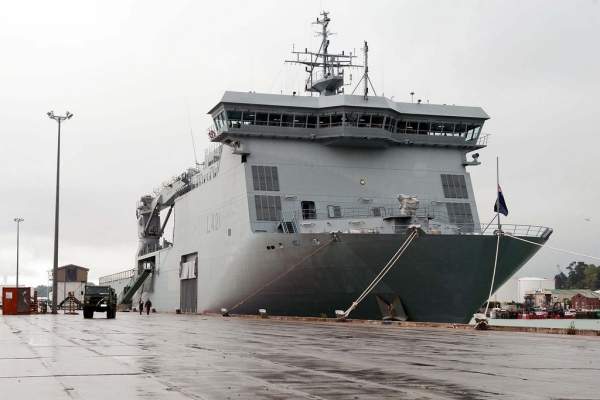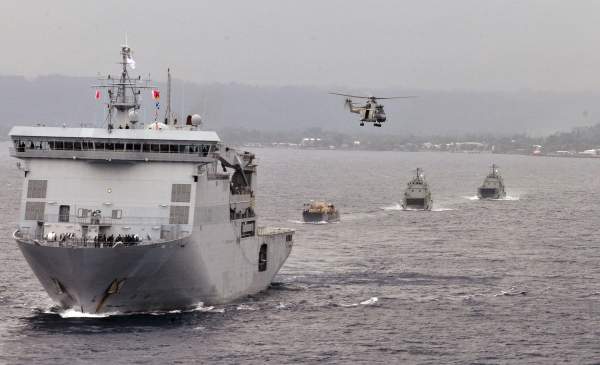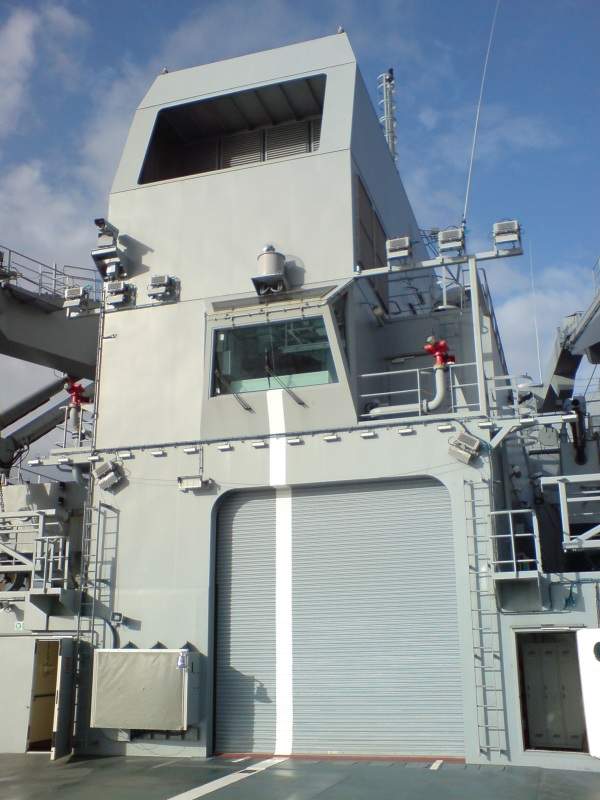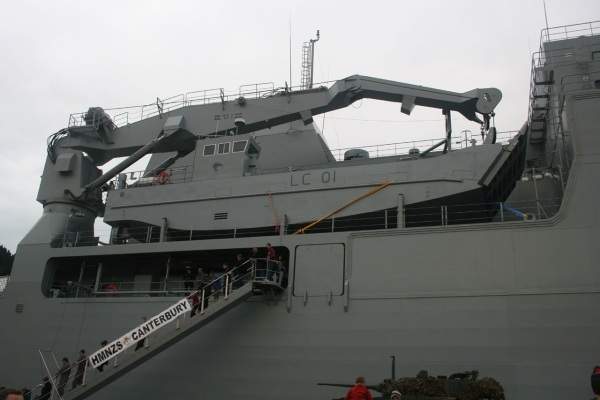HMNZS Canterbury is a multi-role vessel (MRV) in service with the Royal New Zealand Navy (RNZN). It is the first of seven new vessels built for the RNZN under the $500m Project Protector.
In July 2004 Tenix Defence (now BAE Systems Australia) was awarded a contract to build one multi-role vessel (MRV), two offshore patrol vessels (OPV) and four inshore patrol vessels (IPV) for the RNZN. The construction of the MRV was subcontracted to Merwede Shipyard based in the Netherlands.
The keel was laid for the Canterbury in September 2005. The vessel was launched in February 2006. Initial sea trials were completed in the Netherlands and the ship sailed to Australia in August 2006 for final fit-out by Tenix at its Melbourne dockyard.
The ship was commissioned in to service with the RNZN in June 2007.
In early 2011 Canterbury was deployed in Pacific Partnership 2011 humanitarian aid and disaster relief (HADR) mission.
Canterbury design features
The design of the Canterbury is based on the commercial roll-on / roll-off ship, Ben-My-Chree. The ship features an ice-strengthened hull to operate in the sub-Antarctic waters. It lacks well deck but is equipped with aviation handling facilities.
Canterbury has two wide stair wells and a large centrally located service elevator for moving the goods between decks.
The ship’s design was criticised for its poor handling of rigid-hulled inflatable boats (RHIB) and sea keeping performance in high sea states.
The ship has an overall length of 131m, beam of 23.4m and a draft of 5.4m. It can complement a crew of 109 including 53 of the core ship’s company, ten flight crew, four government agency officials, seven Army staff and 35 trainees.
Cargo carrying capacity of the RNZN boat
Canterbury provides a sealift capability for the transport and deployment of goods, vehicles and troops. It has the capacity to carry up to 40 New Zealand light armoured vehicles (NZLAV) and embarked troops of up to 250 personnel.
The ship is provided with vehicle lanes accounting for a total length of 403m. It can house up to 33 20ft ISO containers including eight ammunition containers. It also provides space for up to 20 Nato-standard pallets.
The separate hazardous goods facility onboard accommodates two 20ft ISO containers and offers dedicated storage rooms for paint and petrol. The refrigerated containers carried onboard are provided with power sockets at some of the container points.
All of the cargo spaces are equipped with extensive fire-fighting systems.
Canterbury uses wide range of methods for moving supplies and troops from the ship to shore. The two 59t landing craft medium (LCM) boats onboard can carry 50t of payload for a range of 250 nautical miles (nmi). LCMs can be loaded or unloaded by crane or via stern ramp.
There are two RHIBs for transferring small numbers of personnel. The ship carries four NH90 utility helicopters in addition to its own SH-2G helicopter. The cargo and personnel are carried ashore in up to sea state 3.
Armaments and weaponry
The ship is armed with a single 25mm M242 Bushmaster cannon fitted on the MSI DS25 stabilised mount. The gun has a standard rate of fire of 180 rounds a minute. Two 0.50 calibre machine guns and a number of small arms are also available onboard.
Aircraft landing capabilities
Canterbury has a flight deck to support the operations of SH-2G Seasprite helicopters.
It can also handle a Chinook-size helicopter.
The hangar facility features four storage spots and one maintenance spot for helicopters. The aviation spaces are equipped with AFFF sprinkler fire protection.
The Canterbury is powered by a diesel-electric propulsion system integrating two 4.5MW Wärtsilä engines, three auxiliary diesels and two bow thrusters. The propulsion system provides a maximum speed of 19kt.
Accommodation
Canterbury offers messing facilities and recreational areas for the embarked troops. The ship has a series of 12 berth cabins located in the superstructure.
It also features an embarked force administration office, gymnasium, workshops and a medical facility as well as offices for government agency officials.
US Defence Sector – Market Opportunity and Entry Strategy, Analyses and Forecasts to 2015
Detailed analysis and forecasts of the US defence market are available from our business information platform Strategic Defence Intelligence. For more information click here or contact us: EMEA: +44 20 7936 6783; Americas: +1 415 439 4914; Asia Pacific: +61 2 9947 9709 or via email.

